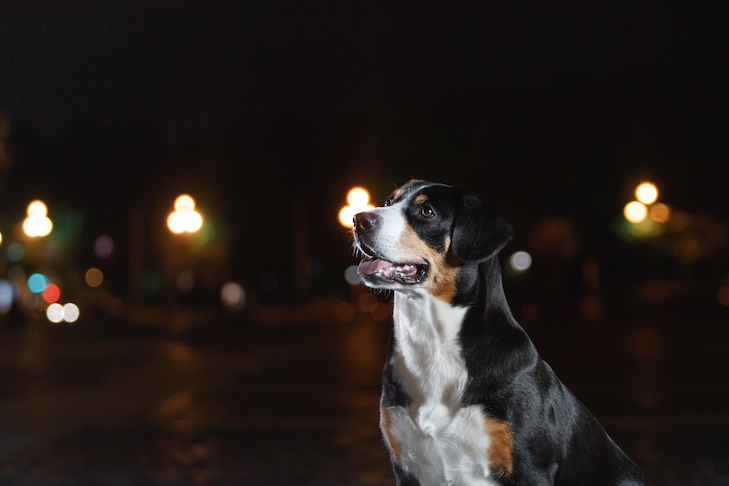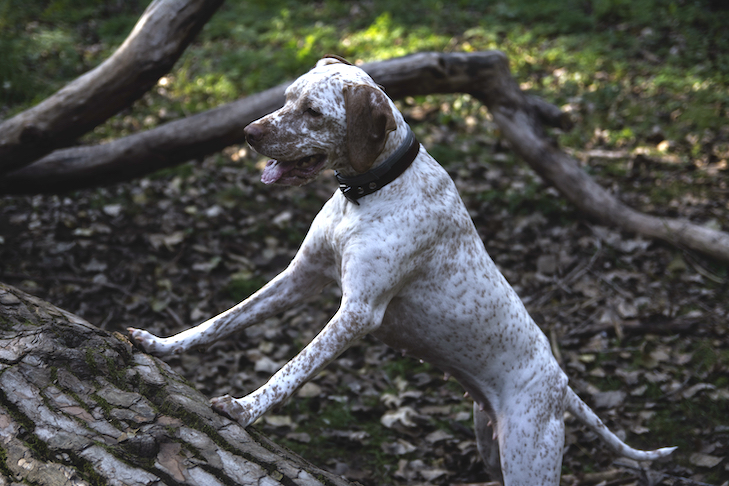Dogs are hard to resist when they glance up at us with their large, soulful eyes. You might be forgiven for assuming that their perception of the world is identical to your own. On the contrary, it’s not.
Dogs can only distinguish between yellows and blues, perceive things at considerably shorter distances (this may explain why your dog howls at you in the driveway), and have a less developed sense of depth than humans (30-60 degrees compared to 140 degrees in humans). Nonetheless, canines are much superior than humans when it comes to night vision.
According to the Merck Veterinary Manual, canine eyes are quite similar to human eyes in terms of their function. The eye is a dynamic organ that dynamically regulates its sensitivity to light and its ability to concentrate on both nearby and faraway things. It creates a stream of pictures that are sent to the brain at a high rate.
Vision, in dogs and in people, is determined by a variety of factors that include:
- Visual perspective
- Field of view
- Depth perception
- Visual acuity (Dogs typically have 20/75 vision.)
- Perception of color and form
- Ability to perceive light and motion
Understanding how our dogs’ eyes work in the dark requires looking back to their ancestry among wild wolves. Crepuscular, derived from the Latin word for twilight, describes the hours of most activity for wild canines. To find and catch their food or breakfast, they had to be able to see in the dark. Dogs have kept this ability throughout their evolutionary history, even though they have adapted to perform their duties throughout the day.

The Anatomy of a Dog’s Eye Take your dog on a walk at night and see if you don’t notice that he warns to items before you do. He’s helpful not just because he has a greater sense of smell, but also because dogs have better night vision and can detect movement and light in low-light conditions.
The large number of rods, which respond to dim light, in the retina of their eyes help them out. Improved night vision is enabled by the rods’ ability to detect and focus on faint light. Cones, which sense color and work best in daylight, predominate in the human retina.
However, the tapetum lucidum is the canine eye’s hidden weapon for night vision. The tapetum is a thin, specialized layer of reflective cells located beneath the retina that works as a mirror inside the eye, reflecting incoming light and allowing the retina to process it a second time. This improves the dog’s detection abilities and visual acuity in low-light settings. The tapetum is not present in human eyes.
Flicker Fusion Frequency (FFF), the rate at which successive frames of light are fused into a single, smooth image, also affects an animal’s night vision. The greater a species’ FFF, the quicker it can adapt to its surroundings. AKC chief veterinary officer Dr. Jerry Klein argues that dogs’ heightened capacity to perceive flickering light helps them to identify subtler movements in the dark since dogs have a greater flicker fusion threshold than humans.
Depending on the breed, most dogs’ eyes are located on the side of their heads, giving them a larger field of vision and enabling them to swiftly monitor their surroundings.

What Causes the Iridescence of a Dog’s Eyes?
You’ve probably noticed that when a dog’s eyes are caught in the beam of a car’s headlight or a camera’s flash at night, they take on a strange, eerie greenish-yellow glow (caused by the camera flash). The tapetum provides the source material for what you perceive.
The tapetum’s reverse reflections may give off a variety of colors, including green, blue, orange, and yellow. The American College of Veterinary Ophthalmologists reports that this coloring often develops within the first three months of a pet’s existence.
However, certain canines, especially those with blue eyes, do not have a tapetum. Therefore, the red blood veins at the rear of the dog’s eyes cause the eyes to appear red in photographs, rather than the greenish reflection from the tapetum.
The canine visual experience: why should we care?
Understanding the visual processes and environmental influences on canines and human vision requires knowledge of what and how canines perceive. As addressed in a recent issue of the Journal of Eyesight, this knowledge also aids in the breeding and training of working dogs for activities that need specialized vision.
A Labrador Retriever, for instance, has to be able to locate and identify the spots where birds have fallen when working in the field or on the water only via sight. When herding sheep, Border Collies must be alert to even the slightest of motions. To keep their human companions safe, guide dogs need sharp peripheral vision.
You may get a better visual understanding of a dog’s night vision by visiting Dog Vision, which has an image processing tool that lets visitors submit photos and alter them to demonstrate the visual differences between humans and dogs.